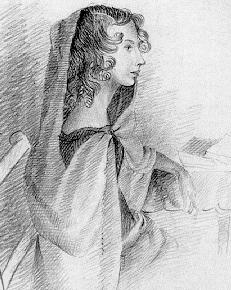On this date Anne Bronte — sister of Emily and Charlotte and author of Agnes Grey and The Tenant of Wildfell Hall — died (1820 – 1849).
Frye refers regularly to Emily and Charlotte but doesn’t seem to refer separately to Anne. However, he does cite the Bronte sisters in this notebook entry to make a crucial point about realism and romance:
As time goes on, the greater seriousness attached to myths, as the stories that really happened or are “true” in some special way, eventually shifts, as with a writing culture the sense of truth or correspondence grows, to the life the story reflects. Thus realism acquires the moral dignity that romances never had, and which realism itself inherits from myth.
Thus in the nineteenth century the “history” of fiction goes through those who can, for the purposes of the alleged historian, be treated as realists. Thackeray, George Eliot, Trollope, Jane Austen, and carefully selected aspects of Dickens form the main skeleton; Wilkie Collins and Bulwer Lytton, even the Brontes, don’t fit quite so well, and Le Fanu, George Macdonald, William Morris, Rider Haggard, for various reasons, don’t fit at all. Neither do the Alice books. My thesis is, of course that romance illustrates structure and realism only content, hence a genuine literary history would put the romances in the centre and make realism peripheral. (CW 15, 202)


Here’s Frye’s shorthand assessment of the Brontë clan, as recorded by Margaret Virany in her notes for Frye’s course on the novel:
Brontë family
––Charlotte––major talents
––Anne––minor talents
––boy––wasted talents
––Emily––genius